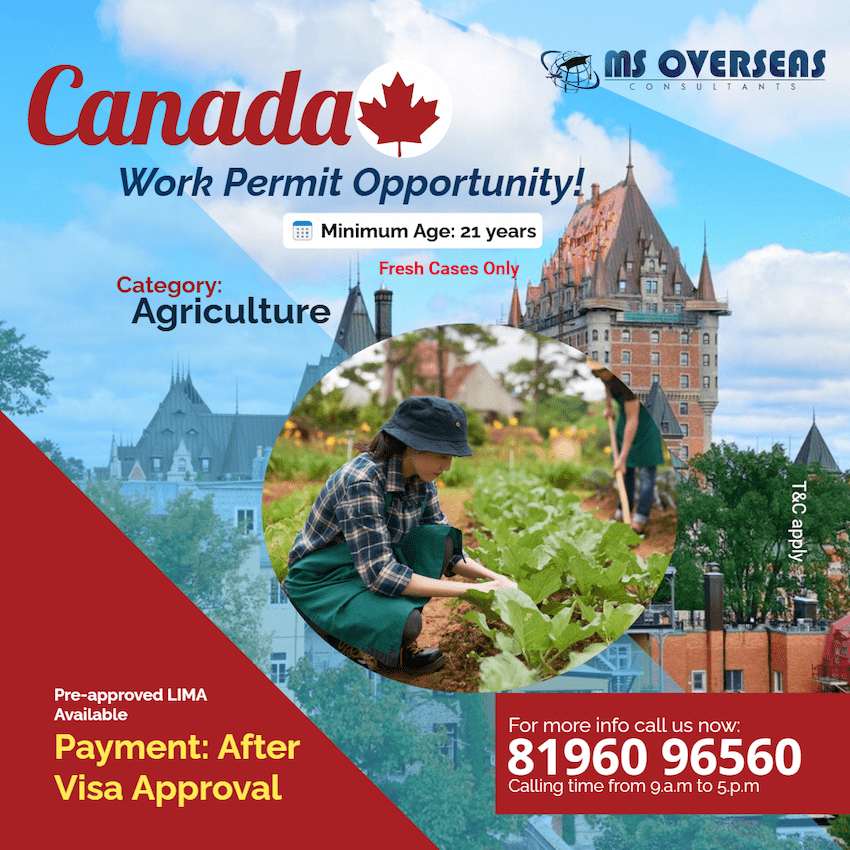In recent years, Canada has experienced a remarkable surge in the utilization of its Temporary Foreign Worker Program (TFWP). Initially established to address acute labor shortages in various sectors, the program has undergone significant expansion, drawing both praise and criticism for its impact on the Canadian workforce and economy. Canada’s Temporary Foreign Worker
Growth and Popularity Surge
Over the past five years, Canadian employers’ demand for temporary foreign workers has more than doubled, reflecting a profound shift in labor dynamics nationwide. According to a CBC analysis of federal data, the TFWP has witnessed exponential growth across diverse industries. For instance, the number of administrative assistants brought in through the program surged from 287 in 2018 to a staggering 3,337 in 2023. Similarly, the influx of construction laborers skyrocketed from 132 to 5,353 during the same period. Canada’s Temporary Foreign Worker

Criticisms and Controversies
Despite its evident popularity and short-term benefits for employers, the TFWP has not been without controversy. Critics argue that the program places foreign workers in vulnerable positions, undermines local wage standards, and distorts fair competition in the job market. Paula Duhatschek’s CBC report highlights widespread dissatisfaction among business groups, labor unions, and the general public, who perceive the program as favoring corporate interests over the well-being of Canadian workers.
University of Waterloo labor economics professor Mikal Skittered critiques the narrative of perpetual labor shortages propagated by corporate Canada, suggesting that such claims may be self-serving rather than reflective of genuine workforce needs. Canada’s Temporary Foreign Worker
Impact on Workers’ Rights and Welfare
One of the most significant criticisms leveled against the TFWP concerns its treatment of foreign workers. Reports from Alberta Views and other sources detail instances of exploitation and mistreatment faced by temporary foreign workers. Issues include job insecurity upon arrival, discrepancies in wage payments compared to promised amounts, and exorbitant rents for substandard housing accommodations.

Sectoral Dependence and Economic Necessity
Philip Cross, a senior fellow at the Macdonald-Laurier Institute and former Statistics Canada economist, emphasizes the critical role of the TFWP in sustaining sectors such as agriculture, where domestic labor productivity often falls short of demand. During economic downturns, such as the rise in unemployment seen in 2020, Canadian farmers relied heavily on temporary foreign labor to maintain operational continuity.
John Foster, an advocate for worker rights, criticizes the systemic disregard for the well-being of foreign workers under the current TFWP framework. He argues against viewing these workers as disposable labor, advocating instead for their equitable treatment and integration into Canadian society during their tenure.
Ethical Considerations and Policy Reform
The ethical implications of Canada’s reliance on temporary foreign workers remain a topic of heated debate. Critics argue that the program’s structure perpetuates a cycle of dependency and marginalization among foreign workers, denying them the same rights and protections afforded to Canadian workers. Calls for policy reforms focus on improving oversight, enhancing worker protections, and ensuring that temporary foreign workers are integrated into communities rather than treated as transient labor resources.
frequently asked questions (FAQs) about Canada’s Temporary Foreign Worker Program (TFWP):
What is the Temporary Foreign Worker Program (TFWP)?
The TFWP is a Canadian immigration program that allows employers to hire foreign workers to fill temporary labor shortages when qualified Canadian citizens or permanent residents are not available.
Who can apply for the TFWP?
Canadian employers must apply for a Labor Market Impact Assessment (LMIA) to hire foreign workers through the TFWP. Workers themselves do not apply directly to the program.
What types of jobs are covered under the TFWP?
The program covers a wide range of occupations across various sectors, including agriculture, hospitality, construction, healthcare, and more.
How long can temporary foreign workers stay in Canada?
The duration of stay depends on the terms specified in the LMIA and work permit. Typically, work permits under the TFWP are issued for the duration of the job offer, up to a maximum of four years.
Do temporary foreign workers have access to healthcare in Canada?
Yes, foreign workers with valid work permits are eligible for provincial healthcare coverage in most Canadian provinces.
Are there any requirements for employers hiring through the TFWP?
Employers must demonstrate that efforts to hire Canadians or permanent residents were unsuccessful, and they must comply with all employment laws and conditions outlined in the LMIA.
What are the criticisms of the TFWP?
Critics argue that the program may depress wages, displace Canadian workers, and expose foreign workers to exploitation due to their temporary status and dependency on their employer.
How does the TFWP impact Canada’s economy?
The program fills crucial labor shortages in various industries, supporting economic growth and allowing businesses to continue operations when local labor supply is insufficient.
Can temporary foreign workers apply for permanent residency in Canada?
Some temporary foreign workers may be eligible to apply for permanent residency through programs like the Canadian Experience Class (CEC) or Provincial Nominee Programs (PNPs) if they meet specific criteria.
Are there quotas or limits on the number of workers under the TFWP?
While there are no fixed quotas, the issuance of work permits is subject to LMIA approval and specific program guidelines, which may vary by occupation and region.
What protections are in place for temporary foreign workers?
Workers are entitled to the same employment standards and protections as Canadian workers, including minimum wage requirements, workplace safety, and access to dispute resolution mechanisms.
Can temporary foreign workers change employers in Canada?
In most cases, foreign workers are tied to their employer as specified in their work permit and LMIA. Changing employers may require a new LMIA and work permit.
How does the TFWP affect Canadian citizens looking for work?
Critics argue that the program may compete with Canadian citizens for jobs, particularly in sectors where temporary foreign workers are heavily employed.
What are the recent trends in the TFWP?
Recent trends show an increase in the number of LMIA applications and work permits issued, reflecting growing demand across various sectors despite ongoing debates about its impact.
Where can I find more information about the TFWP?
More information about the Temporary Foreign Worker Program can be found on the Government of Canada’s official immigration website or through authorized immigration consultants and legal professionals specializing in Canadian immigration law.
Conclusion: In conclusion, Canada’s Temporary Foreign Worker Program has undergone substantial growth, reflecting both its utility in addressing immediate labor shortages and its contentious impact on labor markets and worker welfare. As Canada navigates the complexities of global labor mobility and economic recovery post-pandemic, balancing the needs of employers with the rights of temporary foreign workers remains a pivotal challenge. Moving forward, continued dialogue, policy refinement, and a commitment to ethical labor practices are essential to fostering a fair and inclusive labor market for all. For more information contact us now.

Disclaimer
The views expressed in this article are those of the author(s) and do not necessarily reflect the official policy or position of any specific organization or government entity. This article is intended for informational purposes only and should not be construed as legal or professional advice regarding immigration or labor policies. Readers are encouraged to seek professional guidance tailored to their individual circumstances.
Source: www.immigration.ca
Also read:
- How Trump’s New Tariffs on Canada Could Impact Indian Students’ Budgets in 2025
- Canada Expands Work Hour Limit for International Students: A Game-Changer!
- Canadians Must Obtain ETA for U.K. Travel Beginning January 2025
- Canada Must Strengthen Efforts to Curb Misuse of Visitor Visas
- Canada’s Work Permit policy for International Students
